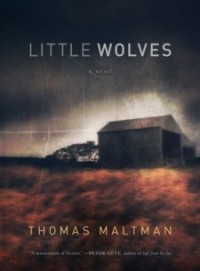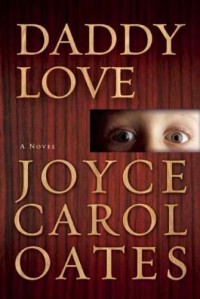Little Wolves by Thomas Maltman
 Friday, January 18, 2013 at 8:04PM
Friday, January 18, 2013 at 8:04PM 
Published by Soho Press on January 8, 2013
Creepy and atmospheric, Little Wolves mixes two kinds of horror -- awful reality and fear of the supernatural -- while building suspense with the steadiness of precision machinery. The emphasis, as it should be in a truly frightening novel, is on the horror that lurks in human behavior.
Lone Mountain is a sleepy, mostly empty town in Minnesota that balances liquid and holy spirits. It is also a town in the grip of wickedness. A boy named Seth shoots Will Gunderson, Lone Mountain's sheriff, before killing himself, leaving his father, Grizz Fallon, distraught and overwhelmed by guilt. It is Pastor Logan Warren's first test and he can't find the words to offer succor. His pregnant wife, Clara, feels responsible for Seth's death because she had been teaching his class about doom, the end of life tale told in Ragnarok. She also feels her own brand of guilt because Seth came to her door before he shot Gunderson, but she left his knock unanswered. Is that why she sees Seth in the corn field after his death, or is she witnessing the return of a spectral Seth?
According to town gossip, the Fallon family has long been cursed. Was Seth possessed by evil spirits or did he have a good reason for killing Gunderson? Grizz doesn't want to know yet he's haunted by a need to learn the truth. He gets a clue from Leah, a girl Seth was dating before her father forced them to break up. It isn't a story the town wants to hear.
In addition to being a fan of Beowulf and its concept of wergild (blood debt), Seth had an affinity for coyotes (the titular little wolves), having raised some from infancy. After Seth dies, the coyotes in Lone Mountain behave strangely. Clara also has an affinity for coyotes, perhaps due to the stories her father told her about a girl who was part wolf. Clara always suspected that the stories had something to do with her own life, and she feels drawn to Lone Mountain because she is certain her mother died there. According to Clara's father, her mother died in a car accident, but he buried part of the truth and Clara is determined to unearth it.
All of these (pardon the expression) haunting questions give the reader an incentive to keep turning pages, as does Thomas Maltman's vibrant prose. The story borrows from legends and mythology while remaining grounded in the desperation of rural life. Little Wolves often straddles a line between supernatural and worldly horrors, creating unrelenting suspense from the uncertain perils Clara and the other characters must face. I wasn't entirely convinced by the penultimate scene and its blast of terror, but it is at least consistent with the story Maltman tells.
The portrait of Clara as the teacher who can make the kids appreciate Beowulf where others could not is a bit contrived, but the fullness of her character is convincing. She has an interesting way of analyzing word origins that informs her understanding of the world. She married a religious man but is filled with religious doubt, a conflict that serves the story well. Clara's search for her past leads to a truly creepy backstory that begins to unfold about midway through the novel.
Although Little Wolves includes a pastor in its cast of characters and explores a theme -- forgiveness -- that should resonate with religious readers, this isn't an overtly religious book. According to Grizz, the whole town craves forgiveness for the sins it visited upon Native Americans a hundred years earlier. While Seth and Grizz and the sheriff and Clara's father are of more immediate concern to the reader, perhaps the entire town should seek forgiveness for its judgmental treatment of residents it views as outsiders. Maltman asks the reader to decide which central characters deserve to be forgiven. Writing with penetrating insight, he makes it possible to forgive them all.
RECOMMENDED



